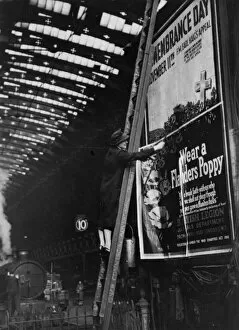Paddington Collection (#6)
"Step back in time with Paddington: A journey through history at Paddington Station" Discover the rich heritage Station
All Professionally Made to Order for Quick Shipping
"Step back in time with Paddington: A journey through history at Paddington Station" Discover the rich heritage Station, a place steeped in history and captivating stories. From the iconic GWR Refreshment Department Platform Trolley in May 1937 to the bustling Quick Lunch and Snack Bar in 1936, this station has witnessed countless moments that shaped our past. Transport yourself to 1929 as you stand on Platform 1 at Paddington Station, surrounded by the hustle and bustle of daily life. Imagine the steam billowing from trains as they arrive and depart, connecting people from all walks of life. Travel even further back to 1904 when Platform 1 was just beginning its transformation into a hub of activity. Picture horse-drawn carriages lined up alongside early locomotives, waiting for their passengers to embark on new adventures. Marvel at the Class 52 Western Diesel Locomotive proudly standing tall within Paddington Station's walls. Its powerful presence symbolizes progress and innovation that propelled us into a new era of transportation. Venture beyond Paddington itself and explore Adlestrop Railway Station in Gloucestershire—a charming countryside stop immortalized by Chris Reynolds' Victorian fire engine cartoon. Let your imagination run wild as you envision simpler times filled with quaint charm. Don't forget King Class Locomotive No. 6004, King George III—its regal stature capturing attention since its arrival in 1931. Witnessing this majestic machine is like stepping into an era where elegance met engineering marvels head-on. Reflect upon history's turning points as you learn about The last broad gauge train leaving Paddington Station on May 20th, 1892—an event marking the end of an era but paving the way for modern rail travel we know today. Immerse yourself completely by taking a glimpse into c. 1910 when Platform 1 was abuzz with excitement once again.
















































